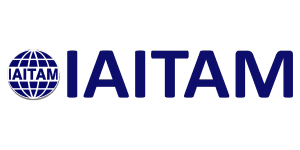Establishing a Vendor Management Framework – Our Story
Earlier this year, we finalized a vendor management framework that we believe is going to generate more value for HDR and our strategic partners!

It has been over 2-years since I have been tasked with developing HDR’s vendor management framework. We are a smaller A&E company with approximately 13,000 employees. When it comes to our IT sourcing, unlike other companies, many decisions are made within and by IT groups. While we rely on our Procurement group to run official RFPs when requested, it is mostly IT’s call who to go with, and what to purchase. And with so much power comes a great amount of responsibility over the company’s funds -after all, HDR is a 100% employee-owned company.
Earlier this year, we finalized a vendor management framework that we believe is going to generate more value for HDR and our strategic partners, by documenting and institutionalizing a common approach to vendor management and evaluation. Our goal is to create a collective environment that can minimize business disruptions, ensure sustainable sourcing, avoid failures of delivery, and generate value for both HDR and our partners.
It all starts with establishing who our strategic partners. A Strategic Partner is flexible and works under a win-win approach as both sides are committed to each other’s success. They demonstrate proactive engagement and alignment with our key strategies and initiatives. The partnership is built on trust and industry experience with a focus on long-lasting relationships. Vendors meeting these criteria are the ones we plan to engage with the most through our Vendor Management Framework. We then identify the relationship manager and relationship point of contact. These two positions are assigned to individuals who spend the most time with a particular vendor.
This engagement framework we designed consists of 3 types of meetings/reviews to be completed regularly.
At the very top once a year, we will invite them to our Executive Strategic meeting. This is an executive level meeting which includes our CTO, Director of Procurement, and Managing Director of IT. We anticipate that our strategic partner will participate in a similar fashion. After all this is an opportunity to discuss the status of existing strategic initiatives, share strategic direction on both sides, review new opportunities, and discuss key wins. The main goal of this meeting is an alignment of strategic vision and synergies between the two companies, and who is better at delivering this than the executives.
As we move down a level, enter Business Reviews. Business Reviews (many companies refer to these as QBRs) have a different audience and topics will be centered around major impacts on the business. For example, upcoming price fluctuations and inflation mitigation opportunities, RFP compliance issues, recent wins/losses, and the most important part – the Health Evaluation Summary – shared with the vendor. We created a Health Evaluation Summary to communicate our expectations to our vendor. It covers various value proposition attributes identified as key to generating value from day-to-day transactions. As an example, for Service & Delivery, we will grade them on the following:
-Timeliness of product delivery
-Pre and post-sale support
-Invoice accuracy
-Price stability
-Service response time
-Adherence to HDR’s existing practices and original RFP requirements
-Willingness to work together on process improvements
We have established a grading system that consists of the following:
-Exceeds Expectations
-Meets Expectations
-Needs Improvement
-Does Not Meet Improvement
Health Evaluation Summary is shared with the vendor with the thought that our vendors will value regular feedback because they are just as eager as we are to identify and fix things that are not working as well as everyone would like.
Another benefit of establishing and going through the completion of the Health Evaluation Summary (even though yes, it could be an administrative pain) is an internal alignment amongst relationship managers/point-of-contact on what HDR’s expectations should be across all vendors.
The last level (lowest level) is all about day-to-day engagement. Discussions around equipment specs, upcoming orders, forecasting, payments, and process improvements are what is expected to be covered in detail. We feel that these engagements should happen at least every other week. This level is where any issues/concerns with the services can be identified and escalated (if needed) to a Business Review.
Overall, we are extremely excited that this framework has been rolled out and I look forward to reporting on the progress a year from now.
